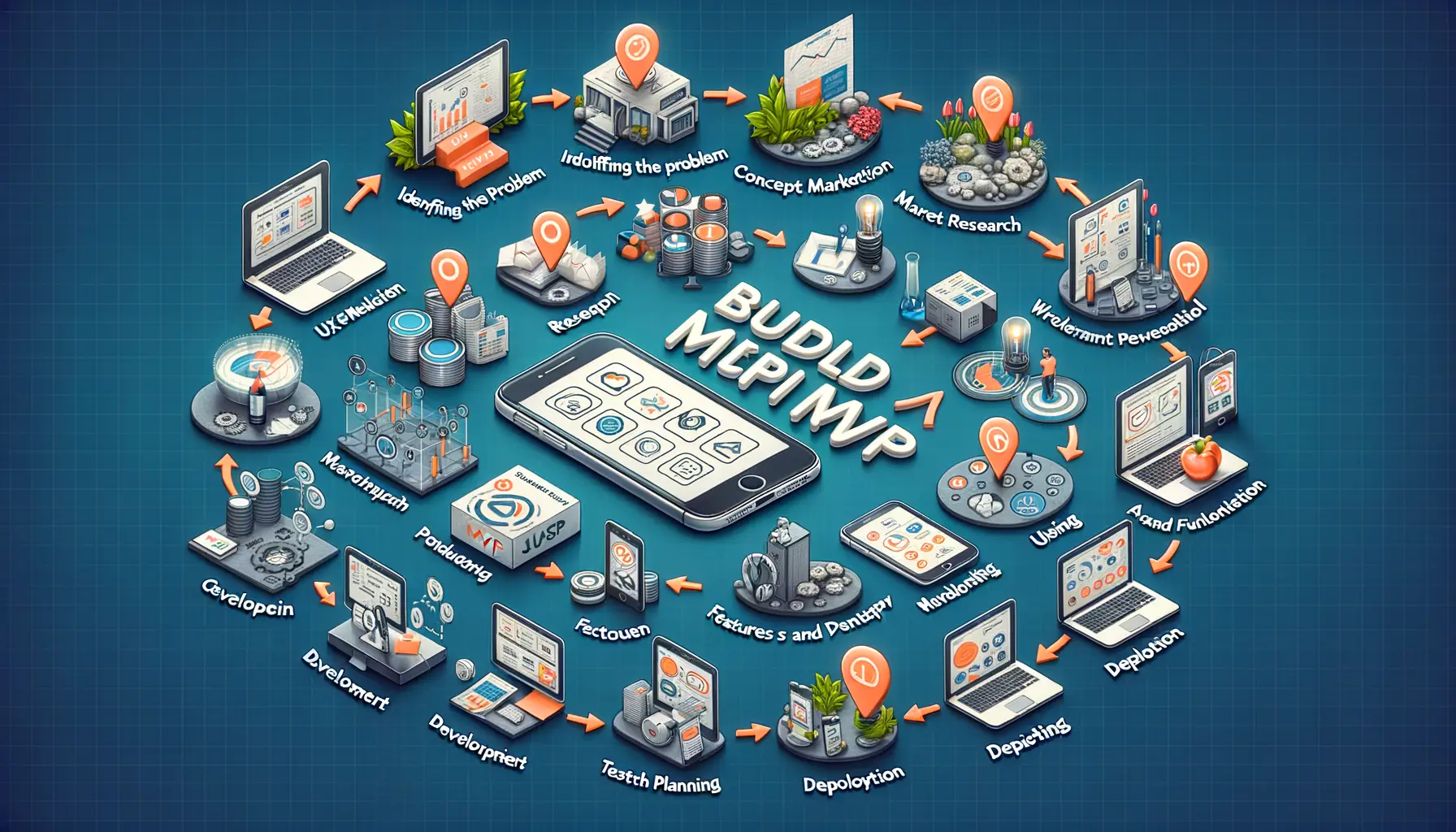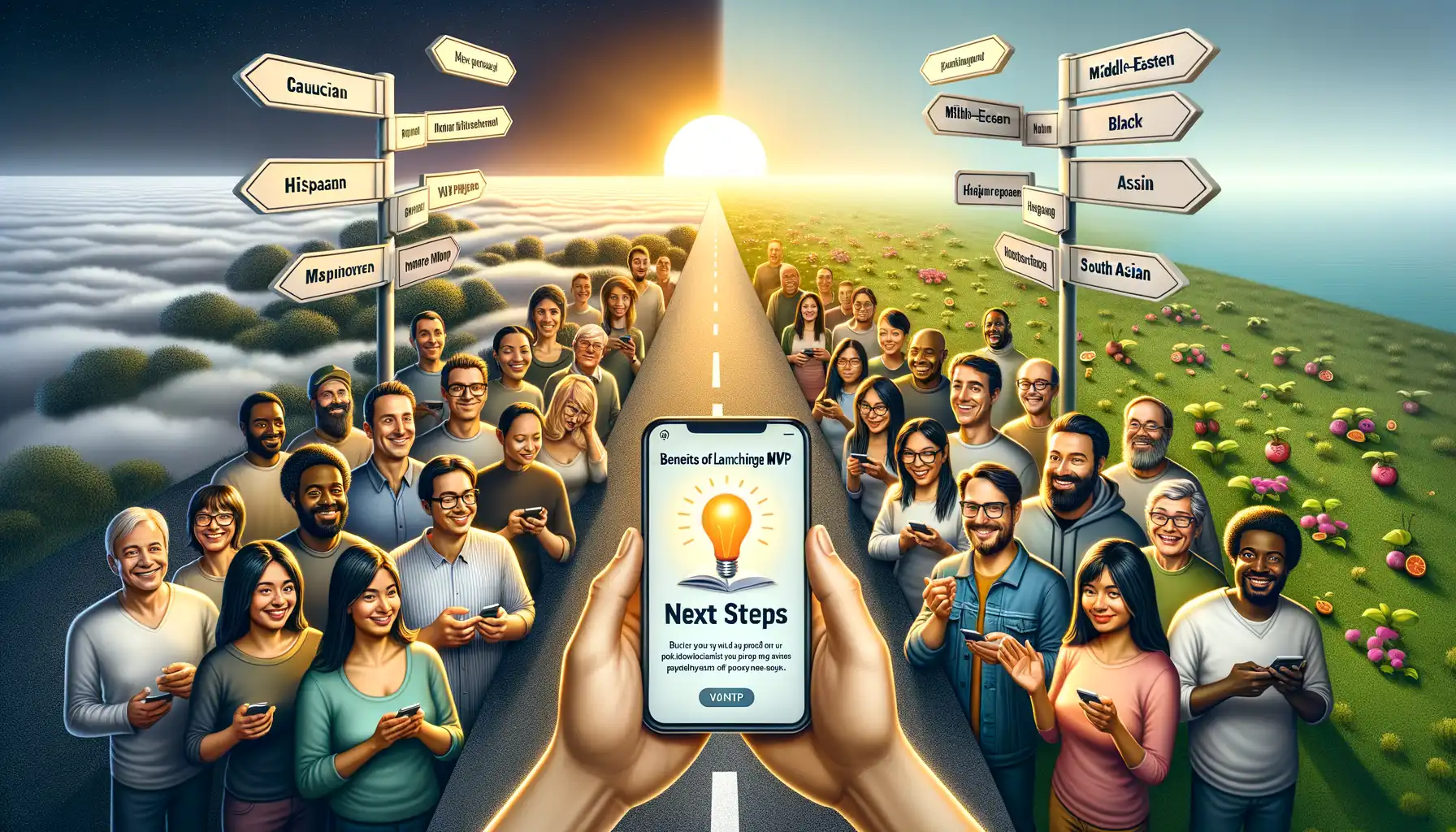Understanding the Concept of a Minimum Viable Product (MVP)
Imagine Building Just Enough to Spark Interest
Think of the Minimum Viable Product (MVP) as your mobile app’s skeleton—bare, essential, yet sturdy enough to stand on its own two feet. It’s not a full-course meal; it’s the appetizer that leaves your users craving more. The MVP is about finding the simplest yet impactful version of your app that delivers genuine value while proving a concept.
Here’s an example: Imagine you dream up a taxi-hailing app. Instead of building an Uber-level behemoth right away, your MVP might just connect riders with drivers and include basic payment options. No flashy route optimization, no loyalty programs—just the core purpose served elegantly.
Why does this matter? Because an MVP allows you to test your idea in the real world without draining your time, money, and sanity. It’s like dipping a toe in the water before diving headfirst into the deep end.
- Understand your target audience’s pain points—and solve them with simplicity.
- Build only what’s necessary and prime it for feedback.
- Iterate fast, iterate smart.
Your MVP isn’t an incomplete product; it’s the seed of something extraordinary waiting to grow.
Steps to Building a Successful Mobile App MVP

Start with a Clear Problem to Solve
Building a successful mobile app MVP is like setting the foundation for a dream home—you need a rock-solid blueprint. Start by identifying the core problem your app will solve. Think about it: What’s the one thing your audience desperately needs? Maybe it’s a way to track their fitness goals or order their favorite coffee faster. Pinpointing this ensures your MVP isn’t just “nice-to-have” but downright irresistible.
Once you’ve locked in your core problem, define your app’s unique value proposition (UVP). What sets you apart from competitors? If your app feels like a clone of others, users won’t stay long. Be bold, even if it means taking risks in your concept.
Create a Streamlined Features List
Now comes the tricky part: deciding what makes the cut for your MVP—because truth be told, not every feature deserves a seat at the table just yet. Use this golden rule: focus only on the essentials. Ask yourself, “What are the fewest features that still deliver value?” Don’t worry about being perfect; MVPs are meant to grow.
Here’s an easy strategy:
- Identify the primary action your users will take (e.g., signing up, booking a service).
- Cut out all fluff—leave advanced filters, animations, and other luxuries for later versions.
Keep it tight. Overloading features is MVP kryptonite!
Key Features to Include in Your Mobile App MVP

Lay the Foundation with Core Features
Building a mobile app MVP is like baking your first batch of cookies—you don’t need all the sprinkles and fancy icing just yet. Start with the ingredients that truly matter. At the heart of your MVP are the core features that define your app’s unique value. Ask yourself: What’s the *one thing* your app absolutely must do to make users click, tap, or swipe with joy? If it’s a ride-hailing app, for instance, focus on the booking process; if it’s a fitness tracker, prioritize steps counting or workout logs.
Here are some key elements to consider for most MVPs:
- User Authentication: Nobody wants to jump through hoops signing up. Make it swift and secure.
- Core Functionality: Strip it down to the essence. For an e-learning app, this could mean video playback and quizzes.
- Intuitive Interface: Think fewer buttons, more results. The simpler it looks, the sooner people fall in love with it.
Don’t Forget the “Wow, This Works!” Factor
An MVP isn’t just about “bare minimum.” It’s still a showcase of what’s to come—and should leave a sparkling first impression. Smooth performance, reliable loading times, and thoughtful touches (like real-time notifications) can make your app unforgettable. It’s these details that tell potential users, *“Hey, this app is worth sticking around for!”*
Common Mistakes to Avoid When Developing an MVP

Misjudging Your Audience’s Needs
Building an MVP without truly understanding your audience is like trying to bake a cake without knowing what flavor they crave. It’s doomed to fall flat. Many startups obsess over their idea and forget to ask: “Does this solve my users’ actual pain points?” If you neglect market research or skip talking to potential users, you risk wasting time on features no one really cares about.
Picture this: You launch your mobile app with a feature you *love*, but users? They don’t even notice it. What could’ve been a launch day triumph turns into crickets. Avoid this heartbreak—let your users guide you like a compass.
Overcomplicating the MVP
Remember, an MVP isn’t the full-course meal; it’s the appetizer. A common pitfall is cramming too much functionality into your MVP, aiming for perfection right out of the gate. This not only delays your launch but also dilutes your focus.
Here’s a checklist of what *not* to do:
- Don’t overload it. Stick to solving one specific problem.
- Don’t aim for perfection. Think usable, not flawless.
- Don’t lose sight of feedback. Build to learn, not just to impress.
Cut the clutter and remember, simplicity is your secret weapon. Users don’t want *everything*—they want something that works.
Benefits of Launching Your MVP and Next Steps

Why Launching Your MVP Can Be a Game-Changer
Imagine this: your mobile app idea is like an uncut gem. It’s bright with potential, but until it’s polished and put out into the world, no one can see its brilliance. That’s precisely what launching your Minimum Viable Product (MVP) does—it takes that rough, raw idea and gives it shape, purpose, and a chance to shine in front of your audience.
When you launch your MVP, you’re engaging with real users while skipping months (or even years) of second-guessing. Here are just a few golden nuggets you unlock by taking this bold step:
- Quick feedback loops: Find out exactly what works (and what doesn’t) without wasting resources on unnecessary features.
- Cost efficiency: Why build a mansion when a cozy cabin gets the job done? Focus on essentials before scaling up.
- Market validation: Discover if people actually *need* your app, instead of guessing in the dark.
Launching your MVP is more than data collection—it’s about forging connections, proving your concept, and gathering the spark to fuel your next big moves. Every download, every piece of feedback is a compass guiding you toward your final masterpiece.
Your Path After the MVP Launch
So, you’ve taken the leap and launched your MVP—what now? Think of this stage as stepping into the laboratory. The real magic begins here! Based on user reactions, you’ll start fine-tuning, whether that means improving the UX, incorporating shiny new features, or even pivoting entirely. Remember, companies like Airbnb began as simple listings websites before becoming global giants.
This phase is where you shift gears. Maybe you scale up your marketing efforts, prepare a pitch for investors, or hone the backend to handle more traffic. The possibilities open up like an unwritten chapter, but one thing remains constant—stay fiercely committed to learning from your users. They’re your co-creators now. Or as we’d say, the wind beneath your app’s wings.



